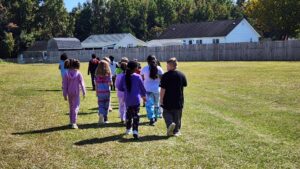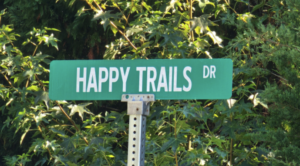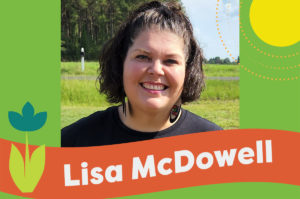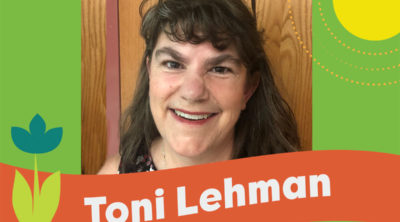This post is part of our Walk This Way series, designed to share The Walking Classroom experiences of teachers and students across the United States. It provides a glimpse into Lisa McDowell’s classroom.
In my previous blog posts, I have discussed some of the STEM podcasts that I use to support the STEM learning of students and how I fit The Walking Classroom into “mini units” of study for my STEM classes. The Walking Classroom podcasts I have used include Benjamin Banneker (5-#28, STEM-#7, Complete-#153), Rachel Carson (5-#8, STEM-#37, Complete-#157), and others.
A Marine Life Mini Unit
Today, I’d like to share with you something that I just did with my fourth grade students. This spring, I wanted to focus on science as it relates to nature for my fourth graders. In a broad sense, this unit relates to marine life, but through it, we discuss various habitats and even touch on animal adaptations.
 I began my “mini unit” by reading and discussing the book, Life in the Ocean: The Story of Oceanographer Sylvia Earle by Claire A. Nivola. Then, I read A Voice for the Everglades: Marjory Stoneman Douglas by Vicki Conrad.
I began my “mini unit” by reading and discussing the book, Life in the Ocean: The Story of Oceanographer Sylvia Earle by Claire A. Nivola. Then, I read A Voice for the Everglades: Marjory Stoneman Douglas by Vicki Conrad.
I fell in love with learning about Marjory and all that she accomplished when I read this book. With my students, we then discussed habitats and what makes the Everglades so unique. To finish up our little unit, we listened to Marine Life (5-#76, STEM-#34, Complete-#142).
Fourth Grade Fun
One of my groups of fourth graders is a particularly challenging group overall, and they really enjoyed this unit. They came into my classroom on Thursday asking, “Are we doing The Walking Classroom today?” When I replied that we were, there were a lot of “Yes!” remarks.
 I am so thankful for The Walking Classroom! Not only does it get kids moving, they are excited to learn about the content presented in the podcasts, and they are engaged in the topic (even the lessons leading up to the podcast!)!
I am so thankful for The Walking Classroom! Not only does it get kids moving, they are excited to learn about the content presented in the podcasts, and they are engaged in the topic (even the lessons leading up to the podcast!)!
Lisa McDowell
STEM Teacher
Benson Elementary





Leave a Reply